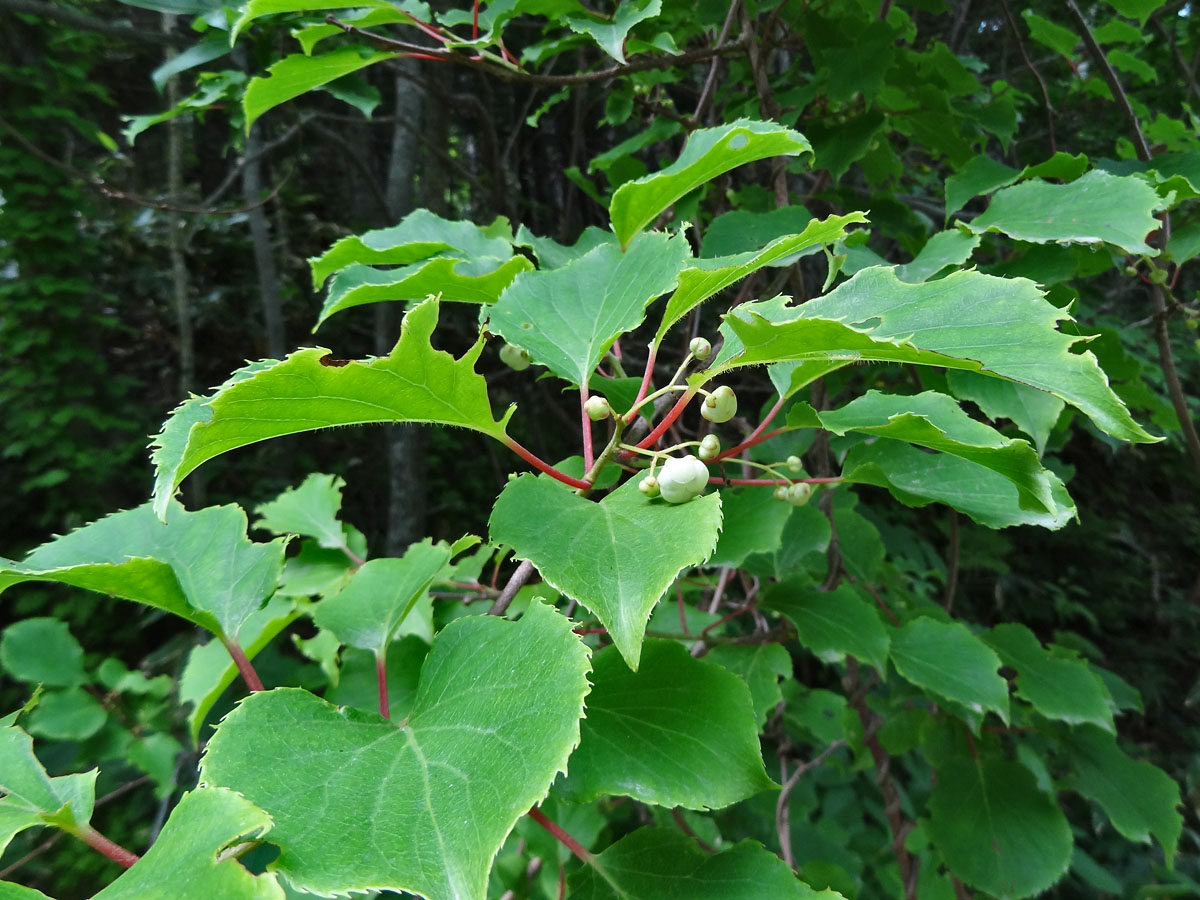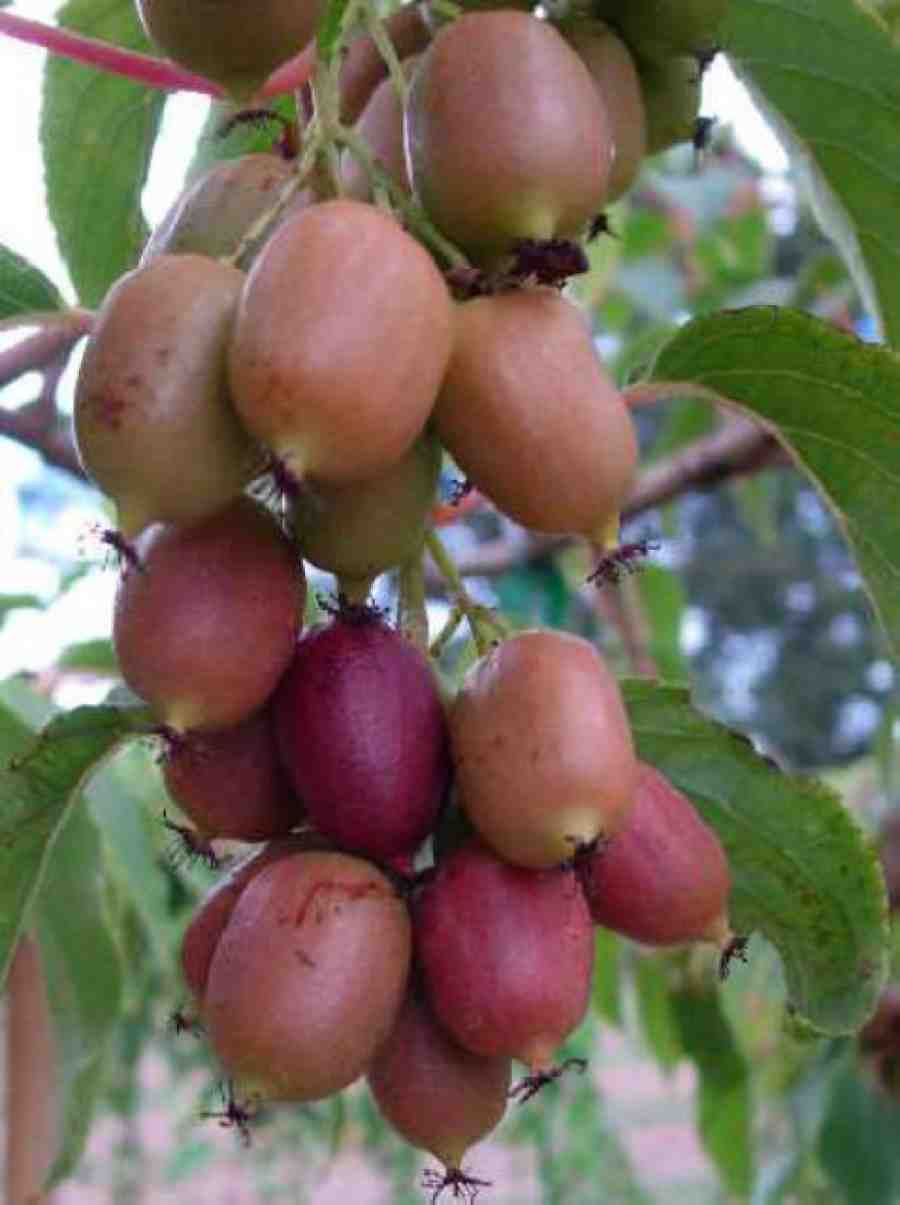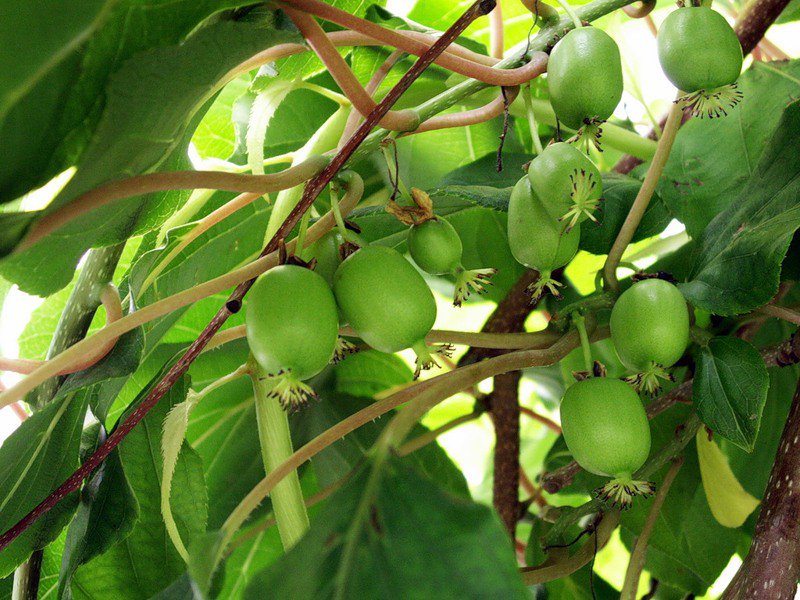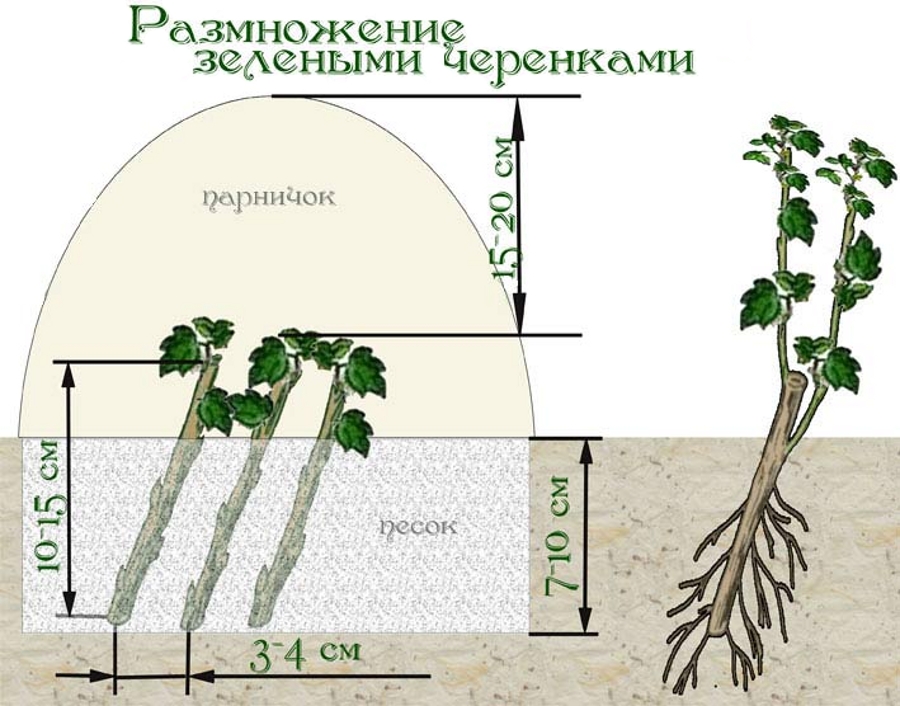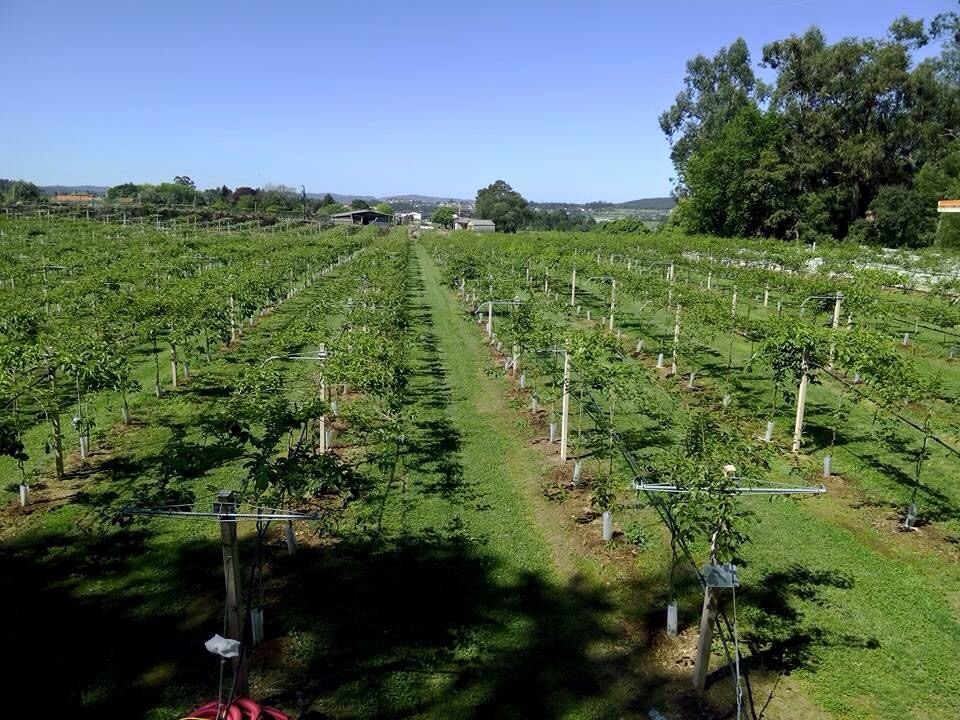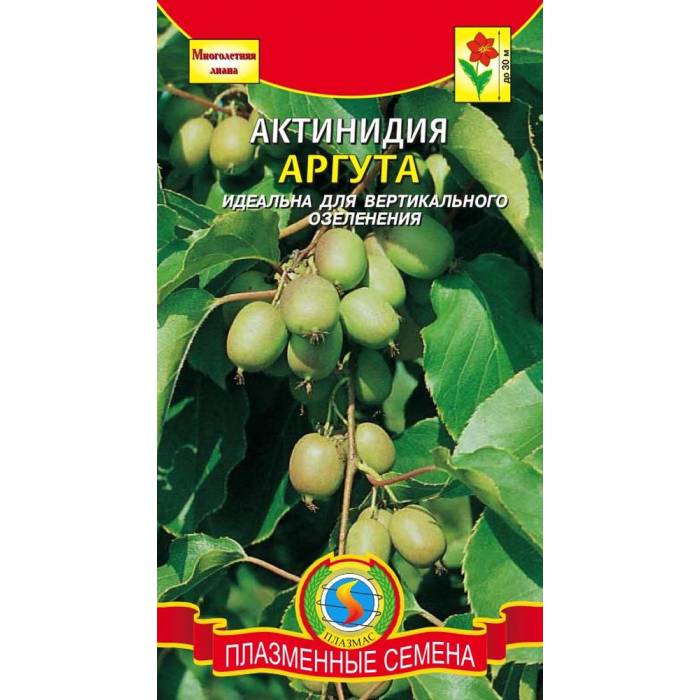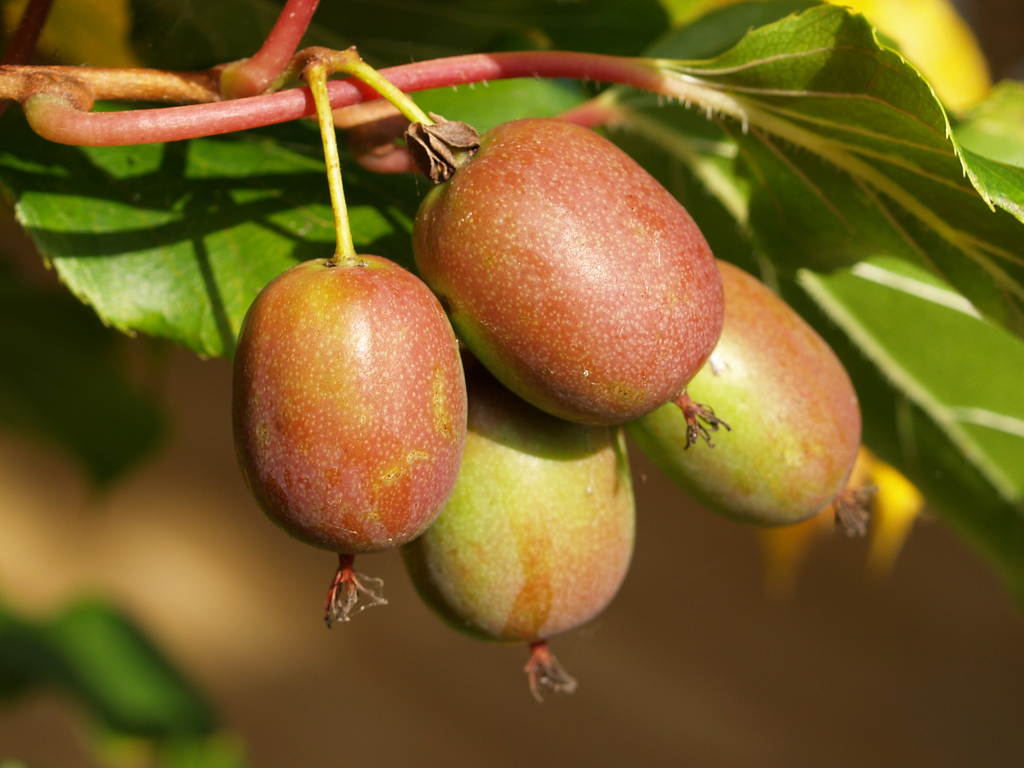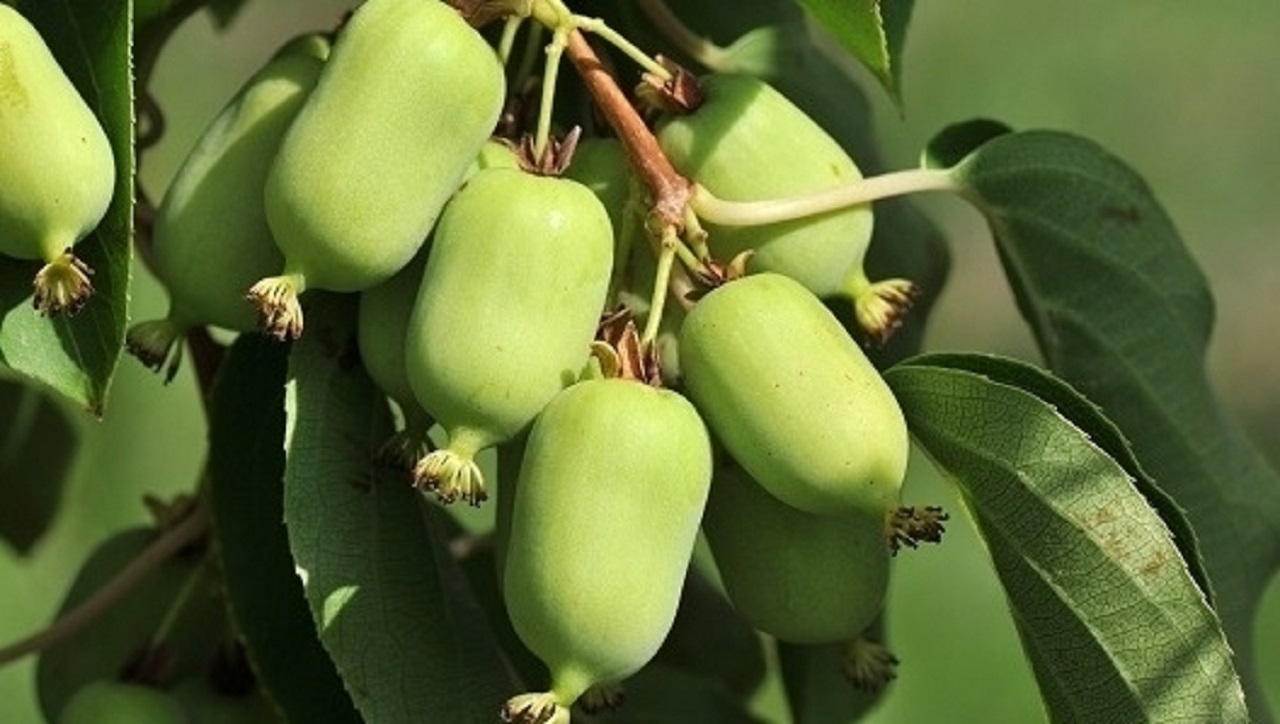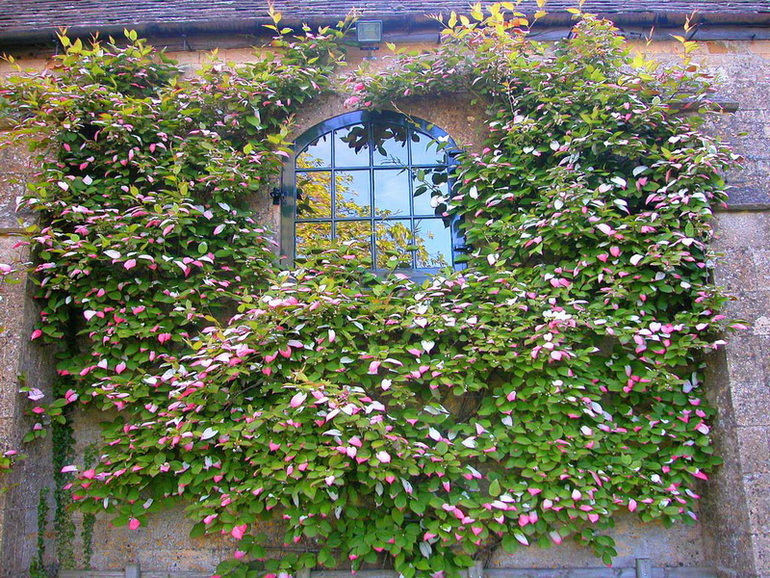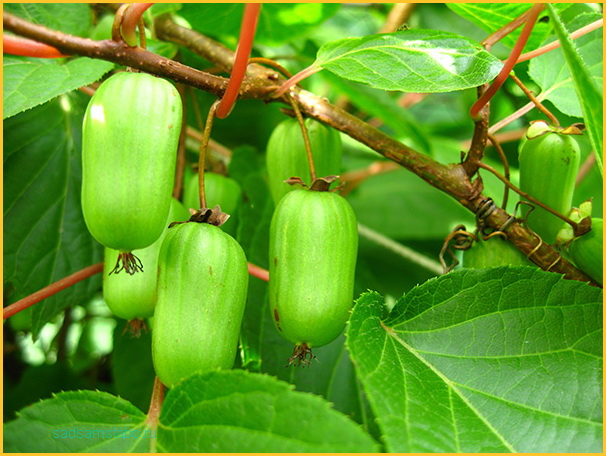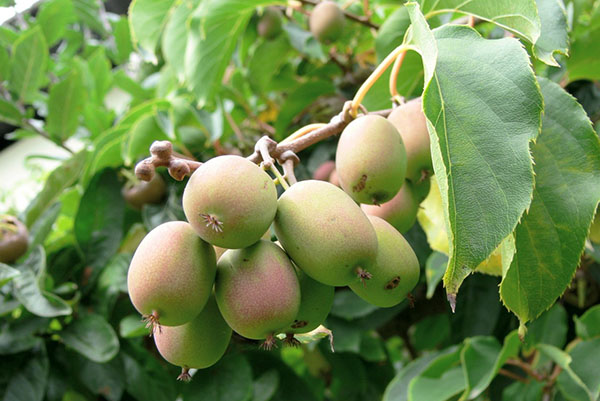Content:
The plant acute actinidia belongs to the exotic category. However, the shrubs of this extraordinary horticultural culture are often found on personal plots. Experienced gardeners and those who prefer to plant finds in the form of exotic plants in their garden have appreciated this type of actinidia. Acute actinidia (arguta) is a self-fertile garden culture that gives abundant yields of delicious berry fruits.
Agronomic description
Actinidia as a plant species is a tree-type liana. Refers to the biological segment of dioecious. The growth process is carried out in a fairly short time. The leaves are plain, green in color, but occasionally you can find leaves with a spotted pattern. The berries resemble kiwi in shape, the fruits of which grow from the gourmet actinidia plant, only of a reduced size - they can be compared with grapes. However, the actinidia pungent fruit itself is more aromatic than representatives of similar garden crops.
The list of countries where the Far Eastern acute actinidia is bred, the polygamous actinidia species and which has a similar name, the polygamous actinidia species:
- Japan;
- Korean Peninsula;
- PRC;
- south of Finland.
The beginning of fruiting occurs three years after planting in a permanent place. The average yield of an adult shrub of acute actinidia is 34 kilograms. Often, in retail outlets specializing in the sale of seedlings for the garden, you can find the Issai actinidia variety, germinating exclusively in warm regions - in conditions of periodic frosts, the planting is not able to survive.
The length of the stems of the actinidium vine can reach 10 meters. Having passed into the flowering stage, the liana is abundantly covered with snow-white flowers.
Types of pineapple actinidia
Varieties of pineapple actinidia:
- Arguta is a tall self-fertileshrub covered with foliage of a dark green hue. The flowers are large, white. During flowering actinidia Arguta pineapple the plant can be used as an ornamental plant. The bush gives abundant large-fruited yields. Good frost resistance allows the plant to survive temperatures below -20 ° C. Strong ovaries do not allow sweet berries to crumble, even due to early maturity. The fruits are ideally preserved during transportation;
- Kolomikta is a tall shrub up to eight meters long. The shape of the leaves is oval, slightly narrowed. The berries are very sweet in taste. Plant growth is carried out in a short time. This variety has good frost resistance. Similar varieties are actinidia Kolomikta Adam, actinidia gourmet and Ganibersuitable for growing in the middle lane.
Characteristics of self-fertile actinidia Issai
Inflorescences of actinidia acute Issai have a pronounced aroma, white large-sized flowers, like the varietal actinidia Adam. Sweet green berries are high in vitamins. High resistance to frost. Eight-meter stems of Issai actinidia are fixed on a trellis support. The soil does not require digging, but it should be slightly loosened.
To provide conditions for rapid growth, the soil must be drained and moist. Issai is a self-fertile actinidia plant that self-pollinates itself.
The seedlings have good resistance to diseases and insect pests.
How to plant actinidia correctly
Before starting planting work, it is necessary to study certain information about the correct cultivation of this crop. Actinidia is a large shrub, when planting it, it is necessary to maintain a certain distance between neighboring plants, which should be selected based on the compatibility of crops.
Preparation of seedlings consists in their processing and removal of non-viable roots. The soil should also be prepared - humus and peat should be mixed with the ground with the addition of mineral fertilizers. Landing grooves are dug out in advance. They should be filled with drainage and a mixture of enriched soil. After the soil has settled in the pits, you can start planting actinidia.
The planting algorithm is as follows:
- Place the roots in a clay solution;
- Fill up the landing recess with ordinary soil;
- Place seedlings;
- Cover with the remaining earth;
- Tamp the soil;
- Water thoroughly.
How to grow properly
Acute actinidia is grown, observing all agrotechnical recommendations for care. For good germination of the bush, actinidia should be regularly and well irrigated, weeds should be removed near it.
Also, a liana shrub needs pruning and fertilization. Watering the soil must be carried out twice a day. Improper implementation of any of the above planting care measures will negatively affect the quality indicator of the yield, as well as the number of ripe berry fruits.
How to propagate acute actinidia
There are four breeding methods for the actinidia shrub:
- By cuttings;
- Layers;
- Seed;
- Lignified cuttings.
By cuttings
Propagation by cuttings is the fastest way. Cut green branches are placed in a container with water. The stalk is cut into two parts, after which the lower leaf part is removed from it. After that, the cuttings are planted in a greenhouse in soil mixed with sand and fertilizers.
Before the onset of frost, the cuttings are covered with foliage until the spring warms, after which they are planted in a permanent place.
Arc layering
Reproduction of acute actinidia with the help of arc layers is considered a time-consuming process, which is carried out when the first leaves appear. This method consists in the following:
- Inspect the plant carefully;
- Select tall shoots;
- Tilt the shoots to the ground;
- Secure the shoots with garden chips;
- Cover the fortified top with earth;
- Water the planting material;
- Sprinkle with sawdust;
- Water the resulting education;
- Weed the planting regularly;
- Separate the formed plant;
- Transplant the planting material to a permanent place.
By seed method
To obtain seed material for germinating actinidia, they are removed from ripe berries, after which they are thoroughly washed and dried. Before planting, the seeds are kept in water until they are swollen. After that, you should place them in a nylon cloth and bury them in moist soil. When the first sprouts appear, plant in a container with earth.
Lignified cuttings
When propagated by lignified cuttings, they are cut into a length of approximately 18 centimeters with a couple of buds. The rooting of the planting material can be carried out in any conditions suitable for growing an actinidium plant. Planting is carried out in April in light, loosened soil with a high level of fertility. One kidney should remain on the surface.
Advantages and disadvantages of actinidia varieties
Positive characteristics, in comparison with other varieties of this culture, are an abundant amount of compounds useful for the human body. The chemical composition of acute actinidia includes minerals, vitamins and trace elements. The finally ripe berry contains a number of useful compounds:
- organic matter;
- cellulose;
- keratin;
- water;
- vitamin C.
Ways of using berry fruits:
- fresh;
- in a revised form;
- in dried form;
- canned.
Culinary products made from actinidium fruits:
- jam;
- compotes;
- jelly;
- marmalade.
Actinidia berries are suitable for medical applications. With the help of regular consumption of the fruit, diseases such as:
- gastrointestinal diseases;
- anemia;
- whooping cough;
- rheumatism;
- pulmonary diseases;
- reduced immunity.
The negative difference between acute actinidia is the ability of this product to negatively affect the health of the body, including the male.
In addition, the shrub of acute actinidia does not have resistance to lesions by phylostictosis, powdery mildew and fungal diseases. The plant is harmed by spring frosts.
Actinidia pungent is a plant that is considered exotic in our latitudes. However, actinidia can become an excellent decorative element of any landscape composition and a wonderful drug that is of great benefit in the treatment of many diseases.
